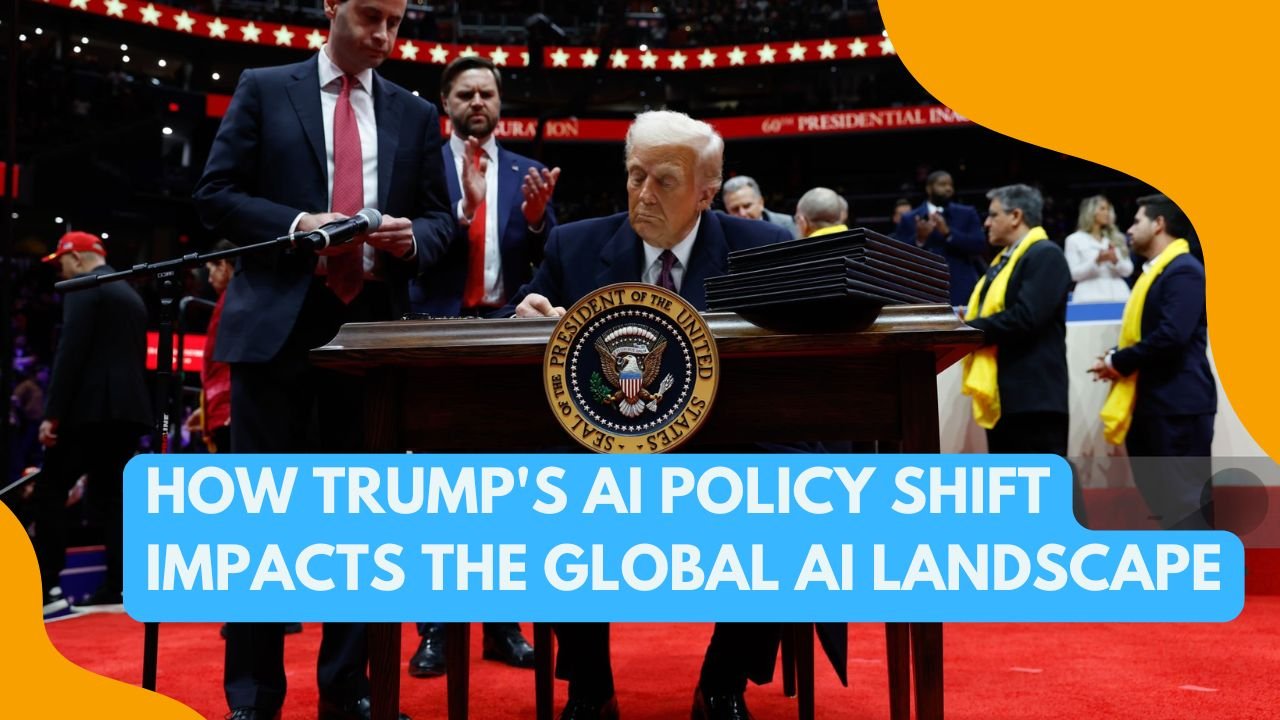Artificial Intelligence (AI) is at the center of a high-stakes global competition, and recent policy changes in the United States have added fuel to the fire. President Donald Trump’s repeal of former President Joe Biden’s 2023 AI executive order marks a pivotal moment, sparking debate on the balance between innovation and oversight. Let’s dive into the details of this policy shift, its implications for AI safety, and the broader US-China rivalry in AI dominance.
Why Did Trump Repeal Biden’s AI Executive Order?
In line with his campaign promise, Trump revoked Biden’s AI oversight order, which had imposed stringent safety and reporting requirements on AI developers. Trump’s administration framed this move as a step towards fostering innovation and removing what they viewed as unnecessary bureaucratic hurdles. Republicans criticized Biden’s regulations for embedding “radical leftwing ideas” into AI development, arguing that they slowed down progress in this critical field.
What Was in Biden’s AI Executive Order?
Biden’s 2023 executive order aimed to ensure that AI technologies were developed responsibly. Some key measures included:
- Mandatory Safety Testing: Developers had to submit results to federal authorities before releasing AI systems to the public.
- Safety Standards: Federal agencies were tasked with creating guidelines to mitigate risks, including cybersecurity threats.
- Bias Detection: The National Institute of Standards and Technology (NIST) was charged with helping developers address issues like algorithmic biases.
The order’s repeal eliminates these requirements, signaling a major shift towards deregulation.
A Shift Towards Deregulated AI Policies
Trump’s approach emphasizes economic growth and national security while rolling back regulatory barriers. Key features of this policy shift include:
| Policy Aspect | Trump’s Deregulated Approach | Biden’s Oversight-Oriented Approach |
| Safety Testing | Voluntary commitments by industry | Mandatory federal submissions |
| Focus | Economic growth and defense applications | Ethical safeguards and public safety |
| AI Safety Institute | Potential dismantling | Development of voluntary guidelines |
| Reskilling Programs | Considered to address job displacement | Focused on mitigating automation risks |
While deregulation aims to accelerate AI advancements, critics warn it might increase risks such as algorithmic biases and privacy breaches.
US vs. China: The AI Arms Race
The United States and China are locked in a fierce battle for AI supremacy. This rivalry extends beyond technology into realms of economic power and military dominance. Let’s explore the key differences in their approaches:
The US Advantage
- Generative AI Leadership: The US dominates in areas like ChatGPT, thanks to private sector innovation.
- Talent and Infrastructure: World-class universities and robust cloud computing resources keep the US ahead.
The Chinese Edge
- Government Investment: Centralized planning and substantial funding boost China’s AI ecosystem.
- Data Advantage: China’s vast population provides unparalleled data resources.
- Patent Leadership: Since 2021, China has outpaced the US in AI patent filings.
Both nations are also integrating AI into their military strategies, underscoring the technology’s critical importance for national security.
The Fallout: AI Safety Protocols in Jeopardy?
Trump’s deregulatory approach could significantly impact AI safety protocols in the US:
- Eliminated Safety Standards: Without federal oversight, there may be inconsistencies in safety practices across the industry.
- Increased State-Level Initiatives: States might step in to fill the regulatory void, leading to a fragmented landscape.
- Global Ramifications: The absence of federal oversight could prompt international organizations to establish stricter guidelines, influencing how US companies operate globally.
Implications for Consumers and Developers
For Consumers
Without federal safeguards, consumers could face greater risks from untested AI technologies. Privacy violations, algorithmic biases, and unsafe products might become more prevalent.
For Developers
While reduced regulations might lower barriers to entry, navigating a patchwork of state and global safety standards could increase complexity for developers.
Conclusion: A Risky Bet on Deregulation?
Trump’s AI policy shift undeniably prioritizes innovation and economic growth. However, the absence of federal oversight raises valid concerns about safety, ethics, and privacy. In a world where AI is increasingly shaping global power dynamics, finding the right balance between regulation and innovation is more critical than ever. As the US and China race towards AI dominance, the stakes couldn’t be higher.

